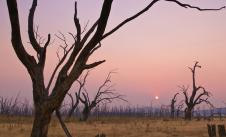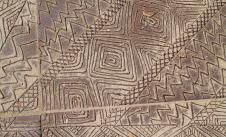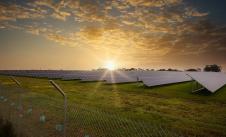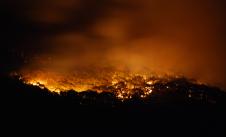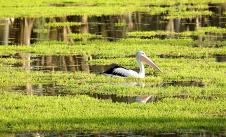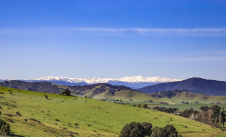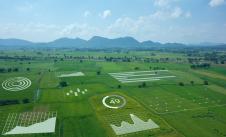Background
Fire is ever-present in the Australian landscape and has been for 145 million years. Victoria is one of the world’s most fire-prone regions. It’s where two-thirds of all Australian bushfire deaths have occurred since 1900.
The effects of fire are far-reaching and have consequences across many spheres of our lives.
Environmentally, fire can be helpful to some parts of our ecosystem. It aids the germination of some plants. Certain eucalypts will re-sprout or release seeds after fire. Some banksias and hakeas also use fire to release their seeds into nutrient-rich ash beds where they can germinate.
Fire can open the tree-top canopy allowing sunlight to reach the ground and encourage new growth. It can hollow out trees and logs to become new nesting sites for native plants and animals.
However, fire also affects the quality of our air, water and soil. It can destroy habitats, food sources and bring entire species of plants and wildlife to the brink of extinction. Plant communities that haven’t adapted to fire, like alpine or rainforest areas, can take hundreds of years to recover.
Economically, fire can be devastating, to individuals, to communities and to the state. It can affect people’s health, their assets, their ability to work. It can have broad impacts to regional and international tourism and hospitality as well as local businesses. Socially, the impacts of fire can be even more devastating, with people losing their homes, their lives or their loved ones. The long-term mental health impacts of fires cannot be underestimated.
Research indicates the severity, extent, frequency and duration of bushfires have all increased. Long-term changes in fire weather conditions are now apparent in South-Eastern Australia, including Victoria. There is a clear trend toward more dangerous fire weather conditions during spring and summer. There’s an increased frequency and magnitude of extremes, as well as an earlier start to the fire season.
The 2019–20 bushfires occurred during Australia’s hottest year on record. December 2019 was also the hottest of any December.
The Forest Fire Danger Index (FFDI) uses rainfall, evaporation, wind speed, temperature and humidity data to determine fire danger. Over the past 3 decades scientists have predicted increases to the FFDI. The Commonwealth Scientific and Industrial Research Organisation (CSIRO) and the Bureau of Meteorology (BoM) predicted severe fire days would increase from between 160% and 190% by 2090 compared to 2020.
Overview
Victorian ecosystems provide habitat for a diverse range of fire-adapted native flora and fauna species.
The beneficial effects of fire on ecosystem processes are well researched. At the landscape level, fire assists key processes such as tree decay, tree collapse and stand tree germination. However, unanticipated or inappropriate fire regimes can impact dangerously on the survival of threatened flora and fauna species. These ecological complications highlight an important aspect of optimising fire management in Victoria.
Westpac indicated the 2019-2020 bushfires would result in insured and uninsured losses at around $5 billion nationally. The economic cost of bushfires is expected to double by 2050.
The Flora and Fauna Guarantee Act 1988 (FFG Act) lists around 2000 species. More than 600 of the listed species were impacted by 2019-20 bushfires. There are 244 species that had at least 50% of their estimated habitat burnt. Of those, 215 have a ‘rare’ or ‘threatened’ conservation status.
Many of Victoria's native species are vulnerable to increasing extinction risk and severe impacts of bushfire. This indicates that we need to improve our preventative and response strategies to prevent future losses to bushfires.
It is expected that the area of native vegetation impacted by bushfire is likely to increase because of more frequent extreme weather events.
This is consistent with the findings of the State of the Environment (SoE) 2018 Report. The higher probability of more frequent catastrophic bushfires means there's a growing risk to threatened plants and wildlife. This is not limited to species known to be sensitive to fires.
The Department of Energy, Environment and Climate Action (DEECA) wants to understand the impact of changing fire regimes on ecosystem resilience. To do this they use a range of metrics, including growth stage structure (GSS) and geometric mean of abundance (GMA) and Tolerable Fire Interval (TFI). TFIs are the ideal interval between fires for vegetation communities to recover.
In 2019-20, the area burnt by bushfires, while below minimum TFI (757,898 ha), was the greatest since 1980. The long-term trend is a consistent increase in the proportion of Victoria below minimum TFI. These trends indicate an increasing likelihood that some areas will experience localised extinctions of plant species. In response, DEECA, with external partners, developed a new set of metrics and targets to better understand and measure this risk. These metrics combine field-based observations and spatial modelling to accurately quantify and track changes in ecological resilience. DEECA advises these will be finalised as part of a review of bushfire metrics and targets which is due to be completed in 2023. However, it is likely the deteriorating trend in ecosystem resilience may continue due to the rapidly changing climate.
A risk based approach
A planned burn (or controlled burn) is the controlled use of fire under carefully managed conditions to reduce fuel such as dead wood, leaf litter, bark and shrubs. Planned burns have been a strategic tool to reduce bushfire risk and lessen the spread and intensity of bushfires when they occur. A risk-based approach has been adopted to fuel management on public land. DEECA's fuel management program aims to keep bushfire risk at, or below, 70% of Victoria’s potential maximum bushfire risk.
Maximum Bushfire Risk is calculated as the risk that would be present across the state using a model that assumes the worst conditions are realised, including maximum fuel build-up and extreme bushfire conditions. Victoria’s bushfire risk has been maintained below 70% of its maximum since the introduction of the risk target for the fuel management program.
From July 2009 to June 2022, planned burning accounted for, on average, more than two-thirds (70%) of the total risk reduction, compared to 30% for bushfires.
This is despite bushfires burning an additional 747,000 hectares compared to planned burning in that period. This is because the use of best-available science and data targets areas for planned burning (such as close to high-value assets) to maximise risk reduction, whereas bushfires randomly burn across locations.
Report card
| Location | |||
|
Statewide |
|||
| Location | STATUS | TREND | CONFIDENCE |
|
Statewide |
|||
For bushfires
| Location | |||
|
Statewide |
|||
| Location | STATUS | TREND | CONFIDENCE |
|
Statewide |
|||
For planned burns
| Location | |||
|
Statewide |
|||
| Location | STATUS | TREND | CONFIDENCE |
|
Statewide |
|||
| Location | |||
|
Public forests statewide |
|||
| Location | STATUS | TREND | CONFIDENCE |
|
Public forests statewide |
|||
| Location | |||
|
Statewide |
|||
| Location | STATUS | TREND | CONFIDENCE |
|
Statewide |
|||






